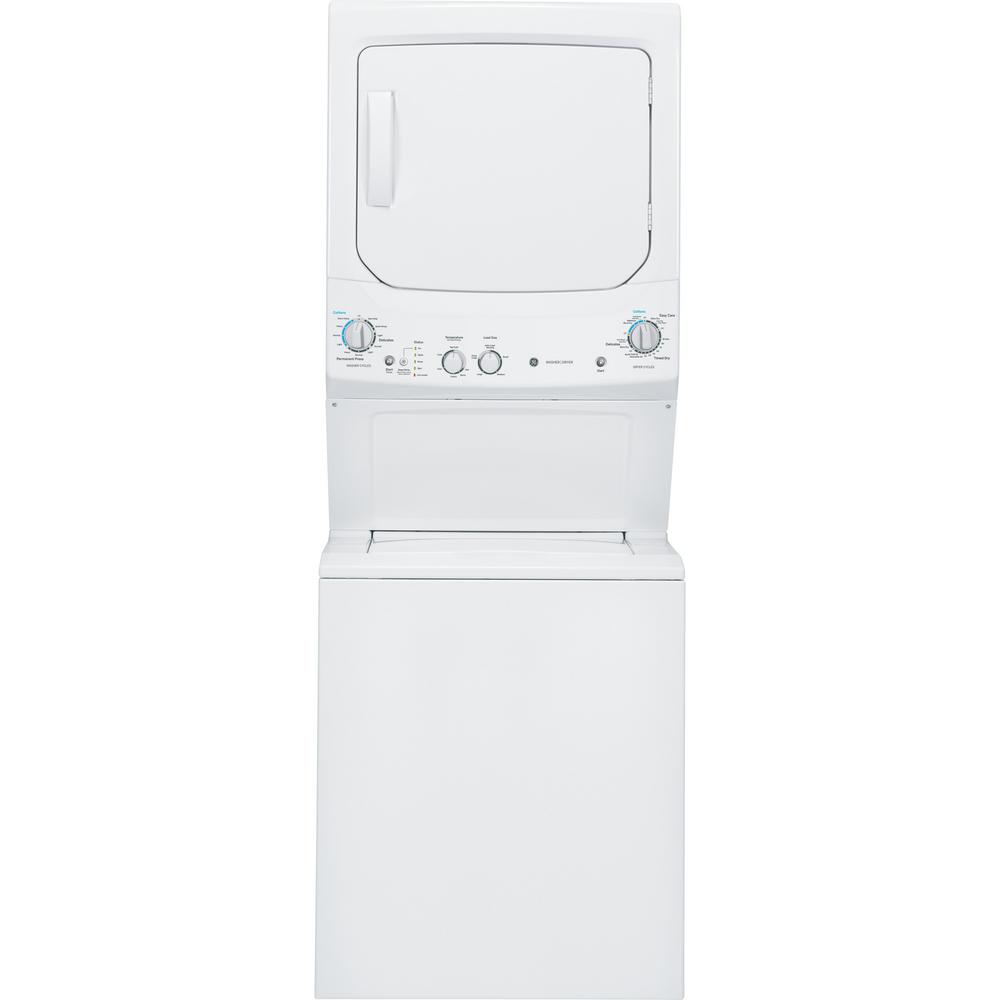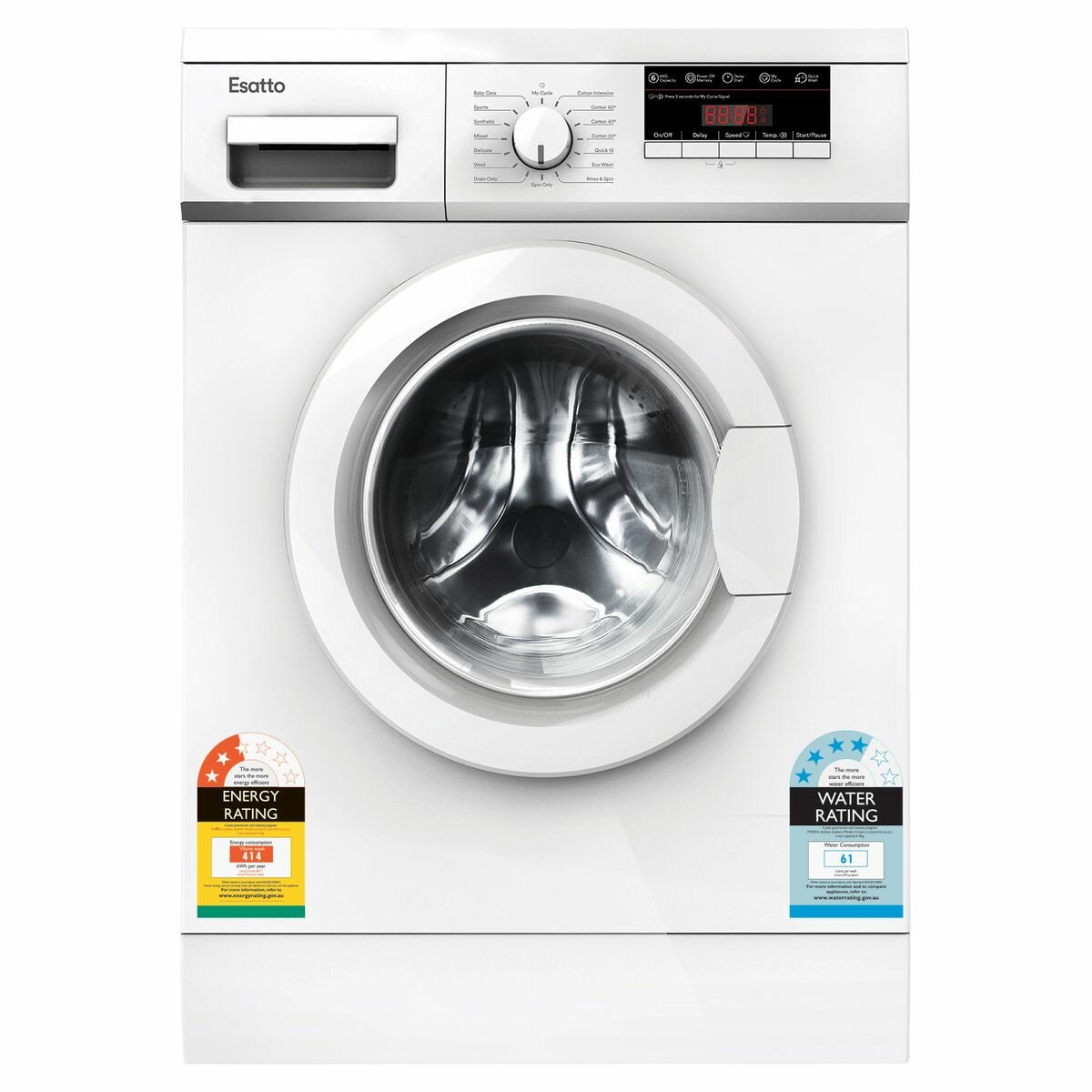Hotpoint NSWA963CWWUKN 9Kg Washing Machine with 1600 rpm – White – A+++ Rated
This washing machine from Hotpoint will take the stress out of laundry days. It has a 9kg drum, making it great for medium-sized households. If you have toddlers running amok, Anti Stain is your go-to programme.
This washing machine from Hotpoint will take the stress out of laundry days. It has a 9kg drum, making it great for medium-sized households. If you have toddlers running amok, Anti Stain is your go-to programme. It erases 20 of the most common household stains, so when there’s paint or food flying around, you won’t have to worry about blemishes on your new shirt. And the Steam Hygiene option is an ideal choice if you want to give fabrics a deep clean. It injects steam into the drum at the end of the wash, removing 99.9% of allergens, meaning anyone with sensitive skin can wear their clothes with confidence. Plus, when you’re in a hurry, there’s also a quick wash cycle which takes just 30 minutes.
- 9kg drum capacity – great for medium-sized households
Easily removes 20 of the most common stains
Adds steam at the end of the cycle for intense cleaning
Speedy 30 minute quick wash programme
Dimensions (cm) – H85 x W59.5 x D60.5
Additional information
| Wash Load | 9 Kg |
|---|---|
| Max Spin Speed | 1600 RPM |
| Dimensions | (H)85.0 x (W)59.5 x (D)60.5 |
| Manufacturer Warranty | 1 Year |
1600 (MDC) was a century leap year starting on Saturday of the Gregorian calendar and a leap year starting on Tuesday of the Julian calendar, the 1600th year of the Common Era (CE) and Anno Domini (AD) designations, the 600th year of the 2nd millennium, the 100th and last year of the 16th century, and the 1st year of the 1600s decade. As of the start of 1600, the Gregorian calendar was 10 days ahead of the Julian calendar, which remained in localized use until 1923.
In the Gregorian calendar, it was the last century leap year until the year 2000.
A, or a, is the first letter and the first vowel letter of the Latin alphabet, used in the modern English alphabet, and others worldwide. Its name in English is a (pronounced AY), plural aes.
It is similar in shape to the Ancient Greek letter alpha, from which it derives. The uppercase version consists of the two slanting sides of a triangle, crossed in the middle by a horizontal bar. The lowercase version can be written in two forms: the double-storey ⟨a⟩ and single-storey ⟨ɑ⟩. The letter is commonly used in handwriting and fonts based on it, especially fonts intended to be read by children, and is also found in italic type.
In English, a is the indefinite article, with the alternative form an.
Hotpoint is a brand of domestic appliances. Ownership of the brand is split between American company Whirlpool, which has the rights in Europe, Chinese company Haier, which has the rights in the Americas and Turkish company Arcelik which has rights in Russia and the CIS.
A machine is a physical system that uses power to apply forces and control movement to perform an action. The term is commonly applied to artificial devices, such as those employing engines or motors, but also to natural biological macromolecules, such as molecular machines. Machines can be driven by animals and people, by natural forces such as wind and water, and by chemical, thermal, or electrical power, and include a system of mechanisms that shape the actuator input to achieve a specific application of output forces and movement. They can also include computers and sensors that monitor performance and plan movement, often called mechanical systems.
Renaissance natural philosophers identified six simple machines which were the elementary devices that put a load into motion, and calculated the ratio of output force to input force, known today as mechanical advantage.
Modern machines are complex systems that consist of structural elements, mechanisms and control components and include interfaces for convenient use. Examples include: a wide range of vehicles, such as trains, automobiles, boats and airplanes; appliances in the home and office, including computers, building air handling and water handling systems; as well as farm machinery, machine tools and factory automation systems and robots.
Washing is a method of cleaning, usually with water and soap or detergent. Regularly washing and then rinsing both body and clothing is an essential part of good hygiene and health.
Often people use soaps and detergents to assist in the emulsification of oils and dirt particles so they can be washed away. The soap can be applied directly, or with the aid of a washcloth.
People wash themselves, or bathe periodically for religious ritual or therapeutic purposes or as a recreational activity.
In Europe, some people use a bidet to wash their external genitalia and the anal region after using the toilet, instead of using toilet paper. The bidet is common in predominantly Catholic countries where water is considered essential for anal cleansing.
More frequent is washing of just the hands, e.g. before and after preparing food and eating, after using the toilet, after handling something dirty, etc. Hand washing is important in reducing the spread of germs. Also common is washing the face, which is done after waking up, or to keep oneself cool during the day. Brushing one's teeth is also essential for hygiene and is a part of washing.
'Washing' can also refer to the washing of clothing or other cloth items, like bedsheets, whether by hand or with a washing machine. It can also refer to washing one's car, by lathering the exterior with car soap, then rinsing it off with a hose, or washing cookware.
Excessive washing may damage the hair, causing dandruff, or cause rough skin/skin lesions.
White is the lightest color and is achromatic (having no hue). It is the color of objects such as snow, chalk, and milk, and is the opposite of black. White objects fully reflect and scatter all the visible wavelengths of light. White on television and computer screens is created by a mixture of red, blue, and green light. The color white can be given with white pigments, especially titanium dioxide.
In ancient Egypt and ancient Rome, priestesses wore white as a symbol of purity, and Romans wore white togas as symbols of citizenship. In the Middle Ages and Renaissance a white unicorn symbolized chastity, and a white lamb sacrifice and purity. It was the royal color of the kings of France, and of the monarchist movement that opposed the Bolsheviks during the Russian Civil War (1917–1922). Greek temples and Roman temples were faced with white marble, and beginning in the 18th century, with the advent of neoclassical architecture, white became the most common color of new churches, capitols and other government buildings, especially in the United States. It was also widely used in 20th century modern architecture as a symbol of modernity and simplicity.
According to surveys in Europe and the United States, white is the color most often associated with perfection, the good, honesty, cleanliness, the beginning, the new, neutrality, and exactitude. White is an important color for almost all world religions. The pope, the head of the Roman Catholic Church, has worn white since 1566, as a symbol of purity and sacrifice. In Islam, and in the Shinto religion of Japan, it is worn by pilgrims. In Western cultures and in Japan, white is the most common color for wedding dresses, symbolizing purity and virginity. In many Asian cultures, white is also the color of mourning.
With or WITH may refer to:
- With, a preposition in English
- Carl Johannes With (1877–1923), Danish doctor and arachnologist
- With (character), a character in D. N. Angel
- With (novel), a novel by Donald Harrington
- With (album), a 2014 album by TVXQ
- With (EP), a 2021 EP by Nam Woo-hyun






by Margaret
Really happy with machine. Easy to use and quiet.
by Kay
Love this washing machine ! Has a 30 minute cycle and a 45 minute for a hotter wash. Really easy to use and so quiet 🙂 Thumbs up from me.
by Jennifer
Smart, economical and very quiet. A washing programme to suit every occasion.
by Mell
Very easy to use and can hardly hear when wash is on spin cycle definitely recommend.
by Karenishly
It’s so quiet you don’t realise it’s actually working. It washes clothes lovely and easy to use.
by Denise
Lovely washing machine, large load, fast spin speed. So quiet, I hardly know it’s running, and low energy usage.